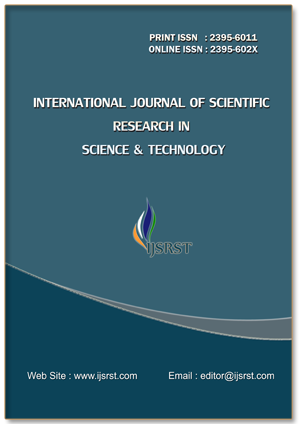The Role of Geography in Shaping Entrepreneurship: Impacts on Venture Creation, Growth, and Sustainability
DOI:
https://doi.org/10.32628/IJSRST24115125Keywords:
Geography, Entrepreneurship, Entrepreneurial Ecosystems, Regional Disparities, Place-Based Policies, Infrastructure DevelopmentAbstract
Geography significantly shapes entrepreneurship by influencing venture creation, growth, and sustainability. This study explores how geographic factors—such as resource availability, infrastructure, socio-cultural dynamics, and market access—determine entrepreneurial opportunities and challenges. Regions rich in resources support resource-based ventures, while resource-scarce areas often drive innovation in sustainable practices and eco-entrepreneurship. Proximity to markets and efficient logistical infrastructure further enhance connectivity, reducing costs and enabling access to larger customer bases. Socio-cultural factors, including social capital, networks, and cultural attitudes, also play a vital role in fostering entrepreneurial ecosystems, where collaboration and innovation thrive. Entrepreneurial ecosystems are often concentrated geographically in clusters and innovation hubs, facilitating knowledge spillovers, access to specialized labor, and collaborative synergies. However, regional disparities—manifested through urban-rural divides and global inequalities—create uneven entrepreneurial landscapes. Urban areas, with better infrastructure, skilled labor, and consumer markets, are more conducive to entrepreneurship, while rural and underdeveloped regions face challenges like limited resources, infrastructure deficits, and skill gaps. Addressing these disparities requires targeted interventions, such as place-based policies, infrastructure investments, and education initiatives. The study highlights the importance of fostering geographically balanced entrepreneurial ecosystems. Policies focused on enhancing transportation, digital connectivity, and vocational training are essential to reduce regional disparities and support diverse entrepreneurial ventures. By recognizing geography as a dynamic force rather than a passive backdrop, this research provides insights into creating inclusive, sustainable, and resilient ecosystems. Understanding the interplay between geography and entrepreneurship enables stakeholders to unlock regional potential and promote equitable economic growth.
Downloads
References
Montgomery, R. M. (2024). Stochastic modeling of climate change impact: Assessing regional temperature increases under global warming. doi:10.20944/preprints202406.0055.v1. DOI: https://doi.org/10.20944/preprints202406.0055.v1
Koyama, M., & Rubin, J. (2022). How the world became rich: The historical origins of economic growth. Polity Press.
Baldwin, R., & Tomiura, E. (2020). Thinking ahead about the trade impact of COVID-19. In R. Baldwin & B. Weder di Mauro (Eds.), Economics in the time of COVID-19 (pp. 59–71). CEPR Press.
Rodríguez-Pose, A. (2018). The revenge of the places that don’t matter (and what to do about it). Cambridge Journal of Regions, Economy and Society, 11(1), 189–209. DOI: https://doi.org/10.1093/cjres/rsx024
Baldwin, R. (2016). The great convergence: Information technology and the new globalization. Harvard University Press. DOI: https://doi.org/10.2307/j.ctv24w655w
Comin, D., & Mestieri, M. (2014). Technology diffusion: Measurement, causes, and consequences. In Handbook of Economic Growth (Vol. 2, pp. 565–622). Elsevier. DOI: https://doi.org/10.1016/B978-0-444-53540-5.00002-1
Dell, M., Jones, B. F., & Olken, B. A. (2012). Temperature shocks and economic growth: Evidence from the last half century. American Economic Journal: Macroeconomics, 4(3), 66–95. DOI: https://doi.org/10.1257/mac.4.3.66
Gereffi, G., & Lee, J. (2012). Why the world suddenly cares about global supply chains. Journal of Supply Chain Management, 48(3), 24–32. DOI: https://doi.org/10.1111/j.1745-493X.2012.03271.x
Fan, S., Kanbur, R., & Zhang, X. (2011). China’s regional disparities: Experience and policy. Review of Development Finance, 1(1), 47–56. DOI: https://doi.org/10.1016/j.rdf.2010.10.001
Glaeser, E. L. (2011). Triumph of the city. Penguin Press.
Aker, J. C., & Mbiti, I. M. (2010). Mobile phones and economic development in Africa. Journal of Economic Perspectives, 24(3), 207–232. DOI: https://doi.org/10.1257/jep.24.3.207
Tabellini, G. (2010). Culture and institutions: Economic development in the regions of Europe. Journal of the European Economic Association, 8(4), 677–716. DOI: https://doi.org/10.1111/j.1542-4774.2010.tb00537.x
Allen, R. C. (2009). The British Industrial Revolution in global perspective. Cambridge University Press. DOI: https://doi.org/10.1017/CBO9780511816680
Rodríguez-Pose, A., & Crescenzi, R. (2008). Research and development, spillovers, innovation systems, and the genesis of regional growth in Europe. Regional Studies, 42(1), 51–67. DOI: https://doi.org/10.1080/00343400701654186
Kanbur, R., & Venables, A. J. (Eds.). (2005). Spatial inequality and development. Oxford University Press. DOI: https://doi.org/10.1093/0199278636.001.0001
Faye, M. L., McArthur, J. W., Sachs, J. D., & Snow, T. (2004). The challenges facing landlocked developing countries. Journal of Human Development, 5(1), 31–68. DOI: https://doi.org/10.1080/14649880310001660201
Redding, S., & Venables, A. J. (2004). Economic geography and international inequality. Journal of International Economics, 62(1), 53–82. DOI: https://doi.org/10.1016/j.jinteco.2003.07.001
Sachs, J. D. (2003). Institutions don’t rule: Direct effects of geography on per capita income. National Bureau of Economic Research Working Paper No. 9490. DOI: https://doi.org/10.3386/w9490
Davis, D. R., & Weinstein, D. E. (2002). Bones, bombs, and break points: The geography of economic activity. American Economic Review, 92(5), 1269–1289. DOI: https://doi.org/10.1257/000282802762024502
Henderson, J. V. (2002). Urbanization in developing countries. The World Bank Research Observer, 17(1), 89–112. DOI: https://doi.org/10.1093/wbro/17.1.89
Acemoglu, D., Johnson, S., & Robinson, J. A. (2001). The colonial origins of comparative development: An empirical investigation. American Economic Review, 91(5), 1369–1401. DOI: https://doi.org/10.1257/aer.91.5.1369
Limão, N., & Venables, A. J. (2001). Infrastructure, geographical disadvantage, transport costs, and trade. The World Bank Economic Review, 15(3), 451–479. DOI: https://doi.org/10.1093/wber/15.3.451
Sachs, J. D. (2001). Tropical underdevelopment. National Bureau of Economic Research Working Paper No. 8119. DOI: https://doi.org/10.3386/w8119
Sachs, J. D., & Warner, A. M. (2001). The curse of natural resources. European Economic Review, 45(4-6), 827–838. DOI: https://doi.org/10.1016/S0014-2921(01)00125-8
Herbst, J. (2000). States and power in Africa: Comparative lessons in authority and control. Princeton University Press.
Downloads
Published
Issue
Section
License
Copyright (c) 2024 International Journal of Scientific Research in Science and Technology

This work is licensed under a Creative Commons Attribution 4.0 International License.
https://creativecommons.org/licenses/by/4.0





